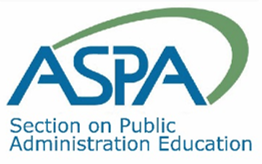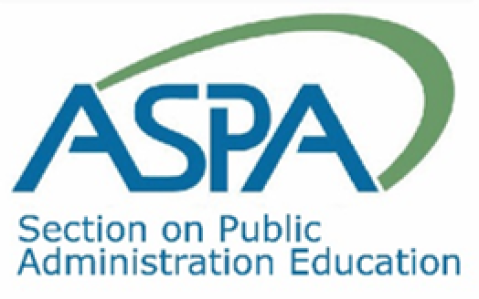Widgetized Section
Go to Admin » Appearance » Widgets » and move Gabfire Widget: Social into that MastheadOverlay zone
Practicing Public Service Values: Inclusion and Diversity in the Classroom
The views expressed are those of the author and do not necessarily reflect the views of ASPA as an organization.
By Rachel Emas
February 9, 2018
 As public service educators, it is increasingly important we exemplify and embody those key public values that we seek to instill in our students. While concepts like accountability and ethics often arise in these discussions about public service values, we must also acknowledge and advocate the importance of diversity. Various forms of diversity include race, ethnicity, gender, sexual identity, sexual preference, national origin and heritage, age, religion, ideology, disability and socioeconomic status, as well as the intersections between them. Respect for this wide range of diversities is a critical skill for a 21st century public service provider, as well as those who educate them.
As public service educators, it is increasingly important we exemplify and embody those key public values that we seek to instill in our students. While concepts like accountability and ethics often arise in these discussions about public service values, we must also acknowledge and advocate the importance of diversity. Various forms of diversity include race, ethnicity, gender, sexual identity, sexual preference, national origin and heritage, age, religion, ideology, disability and socioeconomic status, as well as the intersections between them. Respect for this wide range of diversities is a critical skill for a 21st century public service provider, as well as those who educate them.
At the institutional level, embracing diversity often includes the formation of an office (or officer) of diversity, development  and implementation of a diversity plan, or active recruitment, retention and promotion of diverse groups of scholars, staff and students. In a report to the Ford Foundation from the Higher Education Research Institute, UCLA, researchers Hurtado and Guillermo-Wann found that faculty and staff members feel more supported and are more successful in their pedagogical efforts toward inclusion when educational institutions adopt a comprehensive framework that actively encourages diversity. Thus, we can look also to the efforts of instructors to gauge the acceptance and appreciation of diversity on a college campus.
and implementation of a diversity plan, or active recruitment, retention and promotion of diverse groups of scholars, staff and students. In a report to the Ford Foundation from the Higher Education Research Institute, UCLA, researchers Hurtado and Guillermo-Wann found that faculty and staff members feel more supported and are more successful in their pedagogical efforts toward inclusion when educational institutions adopt a comprehensive framework that actively encourages diversity. Thus, we can look also to the efforts of instructors to gauge the acceptance and appreciation of diversity on a college campus.
To embrace diversity in the classroom, instructors can utilize an approach that supports, shares and builds on students’ unique experiences by explicitly including discussions of diversity, discrimination and biases in the appropriate content areas of the course. For instance, one class topic may address the development and maintenance of social constructs, and how these concepts impact public policy, organizations and administrators. In this discussion, students can debate the evolution of common concepts (such as gender vs. sex, ethnicity vs. race, patriarchy and gender roles, etc.), and how these constructs create implicit biases in individual worldviews, including their own perspectives. Various subjects in public affairs education closely align with key elements of equity and diversity, so instructors have many opportunities to foster a fruitful discussion on dimensions of diversity.

Challenging conversations such as this require the creation of an inclusive classroom environment, and many institutions offer specific training courses on how to manage difficult class discussions. Early in the semester, instructors should set the ground rules for ensuring civil class dialogues. In addition to setting these general rules, instructors should also offer specific guidelines regarding respect for diverse perspectives, especially when sensitive subjects may surface such as those surrounding privilege and stereotypes. In managing these challenging conversations, instructors may choose to begin with a clear, open-ended question and then provide specific clarifying questions that allow students to elaborate and explain their comments. The Teaching Commons at Georgetown University offers a collection of resources regarding the management of difficult discussions. From these constructive conversations in an inclusive classroom setting, the students will be better able to examine how their experiences have shaped their identities, appreciate the value of various viewpoints and accept that personal perspectives color our understanding of others’ behaviors.
Diversity discussions in a classroom are valuable, to be sure. However, to embrace diversity effectively, instructors should also incorporate course materials written from, and reflective of, diverse viewpoints; in short, not all readings should be authored by white, Western men. Instructors should start early in the identification and adoption of texts from diverse perspectives, seeking out not only authors of various viewpoints, but also journals, organizations and outlets which offer outlooks often left out. The search for and selection of course readings which are sincerely sensitive to a diverse society is not always an easy task, but these efforts are a worthy investment in the creation of a classroom climate which actively supports and is grounded in diversity. Efforts at inclusion require active, intentional and ongoing engagement with diversity in ways which promote greater self-awareness, cultural competence and content knowledge.
In our research regarding public affairs and administration, we often praise the public service values of representativeness and responsiveness. However, as instructors in the classroom, we sometimes forget to uphold these values actively in the promotion and support of diversity and inclusion. From this essay, we can appreciate the significance of inclusive institutional and instructional frameworks, utilize tools and techniques to support diversity, and learn how to better manage difficult discussions in the classroom. It is our job as educators and as public service providers to be representative of and responsive to a diverse society, in both the classroom and community.
Author: Rachel Emas, Ph.D. is an Assistant Teaching Professor at the School of Public Affairs and Administration (SPAA), Rutgers, the State University of New Jersey. Working to implement SPAA’s Executive Master in Public Administration (eMPA) program, Dr. Emas draws on her extensive international service experience, as Executive Director of the International Commission on Accreditation of Public Administration Education and Training (ICAPA).








 (2 votes, average: 3.50 out of 5)
(2 votes, average: 3.50 out of 5)
Follow Us!